What Is Facial Palsy? Causes, Symptoms, and Treatment
- Carianne Vermeulen

- Sep 18
- 5 min read
Every year, thousands of people wake up to a life they didn’t expect. For more than 100,000 people worldwide, that moment comes with the diagnosis of facial palsy. At first, it might seem like it is only about the face; a smile that won’t lift, an eye that doesn’t quite close… but the reality runs much deeper.

Facial palsy can touch so many parts of daily life. It helps keep the eye safe from dust and dryness, allows the nose to breathe freely, shapes the words we speak, and lets us share joy, sadness, and connection through our expressions. When those movements are suddenly lost, it can feel as if a part of your identity has been taken too.
For many, it is more than a medical condition, it is an emotional journey. It changes how you see yourself in the mirror, and sometimes, how the world sees you. It can affect anyone, from children to older adults, and its impact goes far beyond appearance, influencing speech, eating, vision, and self-confidence. The causes vary, from viral infections to trauma, nerve disorders, or even the after-effects of surgery, but the emotional weight is often shared across every story.
In this guide, we will explain what facial palsy is, how to recognize it, and the treatments available. So whether you are experiencing it yourself or supporting someone who is, you will have the knowledge and understanding to face it with confidence and compassion.
What is facial palsy and how does it affect the face?
Facial palsy occurs when the muscles of the face stop moving due to temporary or permanent damage to the seventh cranial nerve, also known as the facial nerve. Nearly all causes of facial palsy result in swelling or pressure on or around the facial nerve, which stops the nerve sending messages. There is one facial nerve on each side of the face. Damaging of the left facial nerve will only affect the left side of the face and vice versa. When the facial nerve is damaged, signals from the brain to the facial muscles are interrupted, much like a lamp that won’t turn on because it is unplugged. Without these signals, the muscles cannot move.
This nerve controls most facial expressions, blinking, and even certain aspects of taste and tear/saliva production.
Facial palsy can vary in presentation and severity:
Only the lower face may be affected
One whole side of the face may be involved
Rarely, both sides are affected
What causes facial palsy in adults and children?
Most Common Cause – Bell’s Palsy
Bell’s palsy (idiopathic facial palsy) is the leading cause of sudden facial paralysis. While its exact trigger is unknown, it is often linked to viral infections, which can cause swelling of the nerve inside its narrow bony canal, leading to the symptoms.
Other Causes
Viral infections: e.g. Ramsay Hunt syndrome (linked to shingles), Epstein–Barr virus.
Bacterial infections: Lyme disease, severe middle ear infections.
Tumours: a tumour of the hearing nerve (acoustic neuroma), or a tumour on one of the salivary glands (parotid gland tumours), or surgery to remove them.
Trauma: Head or facial injuries from accidents or falls.
Autoimmune disorders: Sarcoidosis, lupus.
Congenital factors: Developmental issues during pregnancy or birth injuries.
Nervous system disorders: Guillain–Barré syndrome, multiple sclerosis.
Stroke: Causes facial weakness through brain injury, not direct nerve damage.
What are the first signs and symptoms of facial palsy?
The main sign is sudden weakness or paralysis usually on one side of the face, often reaching peak severity within 48–72 hours. This can involve:
Drooping forehead, eyebrow, eyelid, and mouth corner
Difficulty smiling, blinking, or wrinkling the forehead
A heavy or tight feeling on one side of the face
Other symptoms may include:
Drooling
Dry eye or irritation
Difficulty speaking, eating, or drinking
Ear or facial pain
Headache
Loss of taste
Tinnitus (ringing in the ear)
Sensitivity to loud sounds (hyperacusis)
The face may also feel heavy or tight. While it might feel numb, facial palsy does not usually affect sensation. The facial nerve only controls movement, not feeling. Any sudden changes in facial movement should be examined by a doctor as soon as possible. If a stroke is suspected, emergency care is needed.
How is facial palsy diagnosed by doctors and specialists?
The diagnosis of facial palsy is usually a clinical diagnosis. This means a doctor will make the diagnosis after a history and physical examination are performed in order to exclude other possible causes of facial paralysis, such as stroke or trauma. Depending on what they find, they may order:
MRI or CT scans to rule out tumours or lesions pressing on the facial nerve.
Blood tests to detect infections like Lyme disease or other immune-related causes.
Nerve tests such as electromyography (EMG) to measures the electrical activity in facial muscles to determine nerve damage.
Early diagnosis is important because the underlying cause determines the best treatment options and outcome.
What treatment options are available for facial palsy?
Medication
Treatment depends on what caused the facial palsy, how severe it is, and how quickly it started. Early medical treatment can significantly influence recovery. The main types of medication that are typically used are:
Corticosteroids (e.g. prednisone) to reduce nerve swelling, most effective if started within 72 hours.
Antiviral drugs (e.g. acyclovir, valacyclovir) sometimes used if a viral cause is suspected, often alongside steroids.
Antibiotics for bacterial causes like Lyme disease.
Specialist Facial Therapy
Specialist facial therapy is a tailored rehabilitation approach for people with facial palsy, focusing on restoring facial movement, improving symmetry, and preventing long-term complications. It is typically provided by speech-language therapists or physiotherapists with advanced training in facial rehabilitation.
Treatment typically focuses on:
Protecting the eye and mouth early on
Supporting speech, eating, and emotional expression
Promoting normal facial movement
Reducing unwanted movements (synkinesis)
Improving symmetry at rest and in motion
Preventing muscle tightness or contractures
Offering emotional support
Early therapy improves recovery outcomes. Chronic cases may need longer-term treatment.
Why should I not go to a general therapist?
Facial rehabilitation is not typically covered in undergraduate university training, so general therapists often lack specialized knowledge in this field. As a result, they may recommend exercises and treatments that are unsuitable, as rehabilitation of the face requires different approaches than those used for other parts of the body.
Surgery for facial palsy
Surgical treatment for facial paralysis is indicated when recovery is unlikely or functional and cosmetic deficits are significant.
Summary
Facial palsy often arrives without warning; one moment your face feels normal, the next you notice a smile that won’t quite lift or an eyelid that won’t close. Behind this sudden change can be many causes: a viral infection, an injury, a stroke, or a disorder affecting the facial nerve.
Doctors begin by listening to your story and carefully examining your face. Sometimes, they will order scans or nerve tests to understand exactly why you have a facial palsy. Treatment is tailored to each person; it might involve medication to reduce inflammation, protecting the eye from dryness, working with a specialist facial therapist, and in rare situations, surgery.
Acting quickly can make all the difference. If facial weakness appears suddenly, it is vital to seek medical help right away, not only because early treatment can improve recovery, but also because it could be a sign of a stroke.
For many, recovery is a journey of patience and progress. Some people regain full movement, while others notice partial improvement over time. The best outcomes often come from working closely with a team that understands both the medical and emotional sides of the condition, helping restore facial function, rebuild confidence, and improve quality of life.
To discover what recovery might look like, explore our next article: Facial Palsy Recovery Stages: What to Expect at Each Stage. And if you are unsure whether your symptoms could be linked to a stroke, read: Bell’s Palsy or Stroke? How to Tell the Difference.




Comments